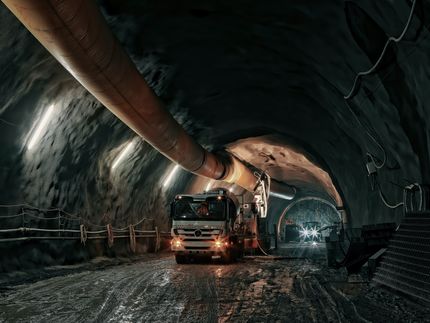Smart grid test as part of the energy transition
At a special lab in Erlangen, Siemens' global research unit Corporate Technology (CT) is testing how smart grids will work in the future. As reported in the research magazine Pictures of the Future, researchers in the 170 square meter lab can simulate almost any smart grid because the facility is equipped with control cabinets full of batteries as well as with a cogeneration plant, an emergency power unit, an adjustable local grid transformer, various loads and converters, two refrigeration units, and a water purification plant.
The team can create a wide variety of miniature versions of smart grids. That's because the lab's diesel generator can also take on the roles of a combined-cycle power plant or a biomass reactor. In these simulations, the ratio of fluctuating to conventional sources of energy corresponds to that of the real-life electricity market. Smart grids will become common in a few years. When fluctuating sources of energy further increase their share of the grid, smart control systems have to ensure that the distributed energy producers interact perfectly with large power plants, as otherwise there is a risk of instabilities and even power outages that can cause considerable damage.
This is exactly what the CT researchers in Erlangen are preventing in their tests. Among other things, they simulate a high level of incident solar radiation so that the photovoltaic system's converter supplies a lot of electricity. When this causes an excess supply of energy in the grid, voltage and frequency increase. To deal with this situation, the researchers adjust the converter's parameters so that they help stabilize the grid instead of unrestrainedly feeding their maximum output into the power network.
The test lab also has a scenario in which the power grid breaks down. The distributed energy producers such as the battery and the photovoltaic system then have to get the power grid up and running again. To perform such a black start, the researchers synchronize the various components so that they all raise the supply voltage to the specified value at the same rate and the power demand of the associated loads is equally distributed between the various energy sources. The researchers set the internal control units so that the converters synchronize themselves on the basis of the voltage and frequency information and ensure stable operation.
The work at the lab in Erlangen provides researchers with a foretaste of the challenges that grid operators face during Germany's energy transition. The operators have to connect countless photovoltaic systems, wind turbines, and biomass reactors with conventional power stations and energy storage systems and create a stable power grid. From 2011 until the fall of 2013, Siemens and the power utility company Allgäuer Überlandwerk studied how this could look in practice. To do this, the two partners examined the network around the village of Wildpoldsried in Bavaria. Here, the village's 2,500 inhabitants sometimes produce five times as much electricity from renewable sources as they themselves consume.
Other news from the department business & finance
Most read news
More news from our other portals
See the theme worlds for related content
Topic World Battery Technology
The topic world Battery Technology combines relevant knowledge in a unique way. Here you will find everything about suppliers and their products, webinars, white papers, catalogs and brochures.

Topic World Battery Technology
The topic world Battery Technology combines relevant knowledge in a unique way. Here you will find everything about suppliers and their products, webinars, white papers, catalogs and brochures.























































